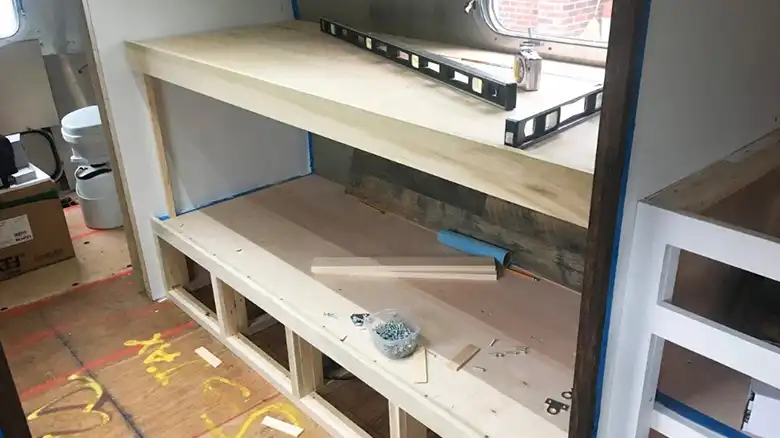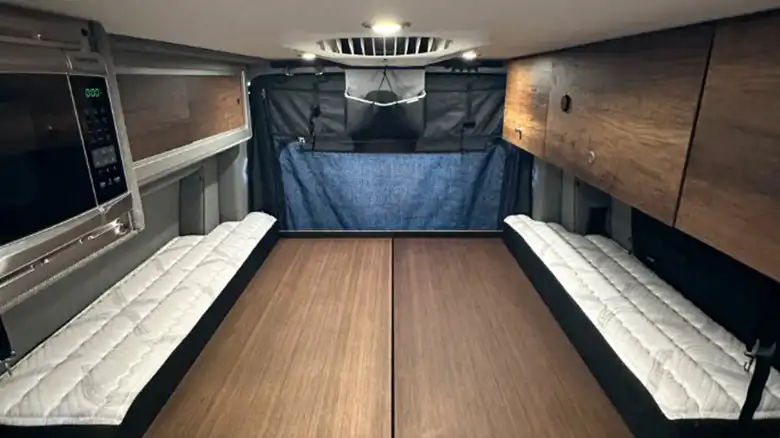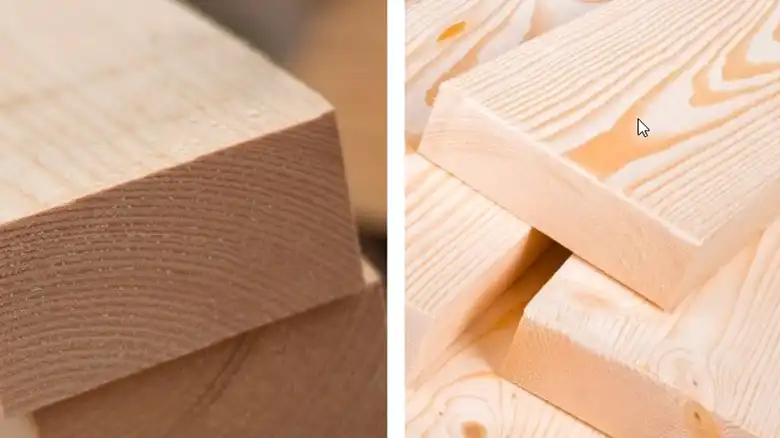Life on the road in an RV allows you to explore the beauty of the open countryside and make lasting memories with family and friends. But making the most of the limited space in an RV can be a challenge. Installing folding bunk beds is an excellent solution that allows RVers to comfortably sleep more people while maximizing the living area when the beds are stowed upright.
I’ll discuss the various types of folding RV bunks, planning considerations for materials and measurements, step-by-step building instructions, and tips for personalizing your bunk beds. By the end, you’ll have the knowledge to create space-saving, multipurpose bunk beds tailored specifically for your RV lifestyle and travel needs.

1. Planning Your RV Bunk Bed Design
Carefully planning out your folding RV bunk bed design is a crucial first step. This ensures you choose a folding bunk style that fits your space limitations and needs.
2. Types of Space-Saving Folding Bunk Beds
There are several different configurations of folding RV bunk beds to consider:
Wall-Mounted: Wall-mounted folding bunks are hinged at the wall, allowing them to fold flush when in the closed upright position. This style is great for smaller RVs where space is very limited. The bunks take up minimal floor space when folded up. Wall-mounted beds also don’t require additional legs or supports. But the beds may extend down quite low when folded down depending on ceiling height restrictions.

Murphy Bed: Murphy bed-style folding bunks utilize a vertical cabinet design that allows the bunks to fold down from the cabinet front when needed. This creates a clean, built-in look and the cabinet faces can include mirrors or shelving when closed. However, the vertical cabinet does take up some floor space. And opening the cabinet doors fully to access the beds can be tricky in tighter quarters.
L-Shaped: L-shaped folding bunks utilize an overlapping L-shape frame. The long side of the L folds down when in use while the short side remains upright for the upper bunk. For storage, the beds then fold into a U-shape. This design can maximize both sleeping and storage capacity. But the bunks may block access to part of the RV when unfolded.
Collapsible Bed: Collapsible folding bunks use detachable or hinged legs to hold up the lower bunk. When it’s time for bed, the legs fold down quickly and easily. This style is great for quick setup and takedown. But the detached legs could get lost or take up space when stored.
3. Selecting the Ideal Bunk Bed Style for Your RV
With the various folding bunk bed styles in mind, you can now select the right one for your particular RV setup and needs. Carefully consider the interior dimensions of your RV, taking measurements of the length, width, and ceiling height where you want to place the bunks. This will determine the maximum size of beds your space can accommodate.
You’ll also want to think about who will be using the bunk beds most frequently – kids, teens, adults, or a mix. The number and size of sleepers will impact your ideal mattress size and bed height. Standard twin-size mattresses work for most folding RV bunks.
Storage needs are also important. Will you want to store suitcases, camping gear or other items in the bunk area when folded up? Make sure to select a folding RV bunk style that leaves accessible storage space when closed.
Finally, factor in your DIY skill level and budget. Simpler wall-mounted bunks require less build time and cost less than more complex cabinet-style Murphy beds. Prioritize what features are essential to you. Usage flowcharts can help narrow your options:
- Very limited space → Wall-mounted bunks
- Seeking a built-in look → Murphy bed style
- Quick and easy setup → Collapsible bunks
4. Essential Materials and Tools for RV Bunk Beds
Once you’ve settled on a folding RV bunk bed design, it’s time to gather the necessary materials and tools. Having all the hardware and building components ready will make the construction process smoother.
For the bed frames, 2×4 and 2×6 lumber provides sturdy and lightweight framing. Opt for inexpensive and easy-to-work poplar or pine boards rather than heavy hardwoods. 1/2″ to 3/4″ plywood can be used to construct the base platform.

For collapsible and hinged folding bunks, heavy-duty hinges like piano hinges allow smooth operation. Hydraulic gas springs can provide assistance lifting murphy-style beds. Other hardware like bolts, angle brackets, and screws are needed to assemble the full frame and attach boards securely.
Standard 5 to 6 inch thick RV mattresses are recommended for comfort and ease of folding. Make sure to select mattresses a few inches shorter than your frame size to allow folding clearance.
Safety items like guardrails, straps, or nets provide important fall protection for upper bunks. Ladders or steps for accessing top bunks are highly recommended.
For tools, you’ll need basic DIY equipment like a circular saw, drill, tape measure, carpenter’s level, ratchet set, and sandpaper. Safety goggles, gloves, clamps, and sawhorses are also useful.
5. Step-by-Step Guide to Building RV Bunk Beds
Now comes the fun part – using your materials to build your customized folding RV bunk beds! Follow these step-by-step instructions:
Building the Frame
- Using your measurements, carefully cut the side boards, end boards, and cross supports to size from your lumber with a circular saw.
- Lay out the pieces and assemble the side and end boards into a rectangular frame using screws or bolts at the corners and joints.
- Attach hinges, brackets, or other folding hardware to the side boards according to your plans. Make sure boards will fold smoothly.
- Fully test the folding mechanism by opening and closing the bunk beds multiple times. The motion should be smooth and stable. Reinforce any weak points.
Adding Safety Features
- Measure and cut plywood to size for the base platform. The plywood should fit snugly within the bed frame with small edge gaps.
- Install wooden slats across the platform spaced 8-10 inches apart. The slats provide support for the mattress.
- Use a level to check that the platform lays perfectly flat and level within the frame. Adjust as needed.
Finishing Touches and Customization
- For upper bunks, carefully measure and attach guardrails on all open sides using screws. This prevents sleepers from falling out of the bed.
- For murphy-style folding beds, install gas springs near the hinges to help lift the heavier beds up and down with ease.
- Add nylon safety straps anchored into the wall to secure the folded beds firmly in the upright position when stowed.
Finishing Touches
- Disassemble and sand all surfaces thoroughly until smooth. Apply protective stain or paint color of your choice.
- Get creative with fun additions like storage cubbies for books and flashlights, sconces for mood lighting, or decals for personalized flair.
Tips and Tricks
Installing your own folding RV bunk beds has many advantages over pre-made bunks, since you can customize to fit your RV perfectly. There are also ways to make the building process easier:
- Pre-drill all screw holes in lumber to prevent cracking and splitting, allowing screws to drive in smoothly.
- Use heavy-duty hinges rated for at least 150 pounds to handle the weight of sleepers. Reinforce hinges with multiple screws.
- Thoroughly test the folding beds for stability and wobbling before use. Add diagonal braces or supports to improve strength.
- Stencil fun nature scenes or decorate with colorful decals to give the bunks a playful, personalized touch kids will love.
Happy Building
Building your own folding bunk beds for an RV takes planning, skill, and elbow grease. But the end result is a fully customized sleeping space perfect for your travel crew and RV lifestyle. By following the steps outlined in this guide, you can design and construct bunk beds that maximize both sleeping capacity and storage in your limited RV space. Get ready to roadtrip in comfort and style with your DIY RV bunks!
FAQs
What are the standard mattress sizes for RV bunk beds?
Twin size mattresses approximately 75″ long by 39″ wide are the most common for RV bunks. You can sometimes fit extra long twins.
How much weight can folding RV bunk beds hold?
Properly constructed RV bunk beds using solid wood or metal framing should safely hold 200-250 lbs per bed. Enforce weight limits.
What’s the easiest RV bunk bed to build for a beginner DIYer?
Basic wall-mounted folding bunks are the simplest to construct as they don’t require complex folding mechanisms.
How do I build bunk beds that won’t wobble in a moving RV?
Use diagonal bracing, angle brackets, and plenty of screws/bolts to make the frame very rigid and resistant to vibration and shifting.
Should I use plywood or slats for the bunk mattress platform?
Slats with gaps provide more ventilation and prevent mattress mold. But plywood offers more uniform support. Either works fine.


